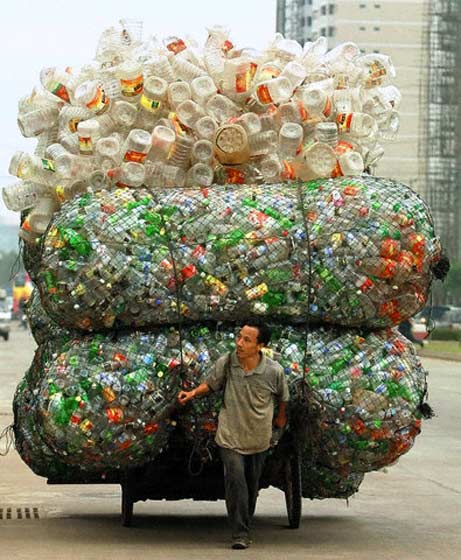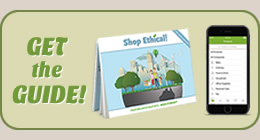 Product packaging takes valuable resources to produce, involves processes which pollute air and water, and is often thrown out at the end of its short life, ending up in landfill. Australia consumes over 3.4 million tonnes of packaging every year — that’s about 165kg per person. Only 48 per cent is recycled.
Product packaging takes valuable resources to produce, involves processes which pollute air and water, and is often thrown out at the end of its short life, ending up in landfill. Australia consumes over 3.4 million tonnes of packaging every year — that’s about 165kg per person. Only 48 per cent is recycled.
- Minimise packaging. Remember the waste hierarchy — avoid first, reuse where possible, then recycle. Check out what your council kerbside collection takes for recycling at Recycling Near You.
- The number of HDPE bags used in Australia fell from around 6 billion in 2002 to 3.9 billion in 2007 — still about 7,000 each minute — so don’t forget to take your reusable shopping bag.
- Avoid double packaging and unlabelled plastic tubs. Buy in bulk where possible. BYO bags, BYO containers. Doing take-away? BYO plate. Pack green groceries loose in a box or basket.
- BYO take-away coffee mug. For example, see Melbourne-produced KeepCup.
- Choose plastics marked with the triangular recycle symbol and ‘1’ or ‘2’ (commonly recycled within Australia) rather than 4, 5 or 6 where possible (often processed overseas). Avoid those marked ‘3’ — PVC produces hazardous by-products (dioxins) when recycled.
More information on how you can take action on Packing and Waste.
Be inspired to take your own journey towards zero waste with these ‘plastic-free’ stories:
- Trailer from the Waste Up – Life Without Plastic doco (Canadian)>
- Beth Terry’s awesome My Plastic Free life blog and Ted talk (US)
- Gina’s pledge to live a year without plastic (Australia, 2011), and her ABC interview
- The Truth about Plastic infographic
See blogs from our 2009 Zero Waste Week Challenge – where a group of 8 households attempt to go zero waste (no black rubbish bag) for one week!
Take up the Plastic Free July challenge.
It’s quite simple. Attempt to consume no single-use plastic during July. “Single-use” includes plastic shopping bags, plastic cups, straws, plastic packaging…basically anything that’s intended only to be used once and then sent to landfill. If refusing ALL single-use plastic sounds too daunting this time, try the TOP 4 challenge (straws, plastic bags, plastic bottles & coffee cup lids).
Find out more
More from Chris Jordon in his ‘Running with Numbers‘ series which turns powerful statistics about consumption and waste into large-scale photographic art.




